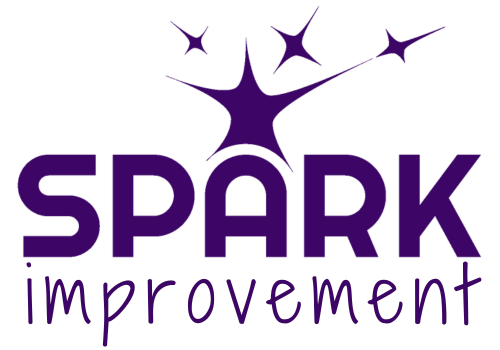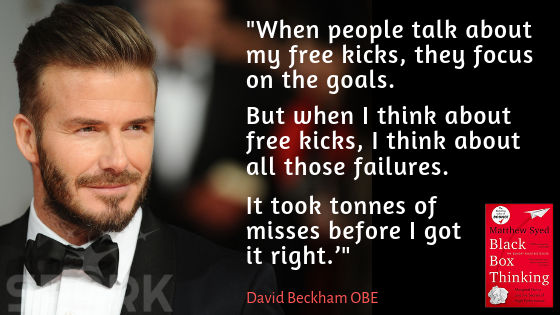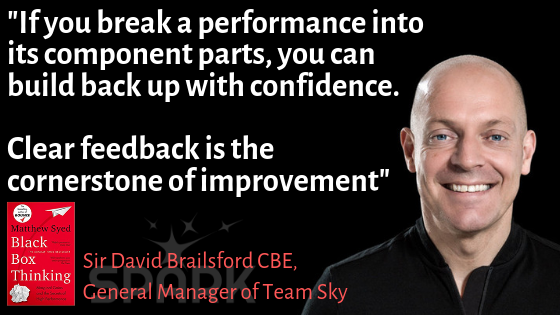Brilliant Books for CI Managers – Book 2
If you are a CI Manager, CI Practitioner or Lean Leader, I’d guess you might have a few books on your desk.
Of course, there are the lean classics – Lean Thinking, The Toyota Way, The Goal – but I think there are also a number of other, less obvious, brilliant books which can be hugely valuable to you.
I believe CI Leaders need to apply the concept of Continuous Improvement to themselves as well as to the organisations in which they work.
We are always asking people to grow, learn and improve – and so should we.
In the first article of this series I recommended How to be a Productivity Ninja, an excellent book for helping you focus and achieve more.
The second book that I recommend is Black Box Thinking: Marginal Gains and the Secrets of High Performance by Matthew Syed.
This brilliant book draws on a wide array of case studies and real-world examples and offers a new approach to high performance, a means to find an edge in a complex and fast changing world.
The premise relates to the ‘Black Box’ data recorders installed in every commercial aircraft and corporate jet. These flight recorders essentially narrate the aircraft’s flight history (by both recording dozens of parameters from the aircraft itself, and also recording conversations in the cockpit) and are crucial in aviation accident investigation.
After any accident, the Black Box is recovered and all data carefully extracted, investigated and publicly reported.
Airlines have a legal responsibility to implement any recommendations, and every pilot in the world has access to the data and reports, therefore having the chance to learn from it.
Aviation has a system where failure is data rich, and where learning from failure is part of the culture.
The book gives many examples of Black Box Thinking at its best – showing how systems and cultures can be developed to embrace and learn from errors, and how data can be used to drive improvement and innovation.
Syed talks about David Beckham – how from the age of 6 he practised every single day until, aged 9, he could do 2003 keep-me-ups. His focus and determination, and his growth mindset, drove him to be one of England’s finest footballers.
Syed explains how Team Sky, the British Professional Cycling team (now Team Ineos) used the marginal gains approach to shock the cycling world and win the Tour de France in 2012.
The concept of marginal gains is to break down a big goal into small parts, improve on each of them, and then deliver a huge improvement overall.
The book details how Team Sky made a multitude of small changes, such as ensuring the cyclists sleep on the same mattress each night (improving sleep quality); vacuuming their hotel rooms thoroughly before the team arrived at each hotel (reducing risk of infections); even washing their clothes in gentle washing powder (improving comfort).
These, and many, many other tiny changes added together to dramatically impact the performance of the team.
The book details James Dyson’s story – of taking a problem (his frustration with blocked vacuum filters) and connecting it with a seemingly unrelated concept (a cyclone he saw used at a wood merchant) to create, after 5127 failed prototypes, the revolutionary Dyson vacuum cleaner.
There is a myriad of further examples and case studies that will bring the concepts to life, and which, I don’t doubt, will inspire you and transform your thinking.
The Black Box Thinking approach is incredibly appropriate to anyone involved with Continuous Improvement.
If we can encourage the organisations that we work with to see failure as rich learning opportunities and develop the willingness and tenacity to investigate the lessons, then we can help drive high performance to extraordinary levels.
If we can also develop our own mindset, to be one of growth and grit so that we can persevere when we hit failures and learn from the unexpected twists and turns of the CI rollercoaster, then we will perform higher ourselves.
Do you have any ‘alternative’ books you think are really useful for CI Practitioners?
Please let me know in the comments.
Please note this post is not sponsored, I bought the book myself and I love it.





